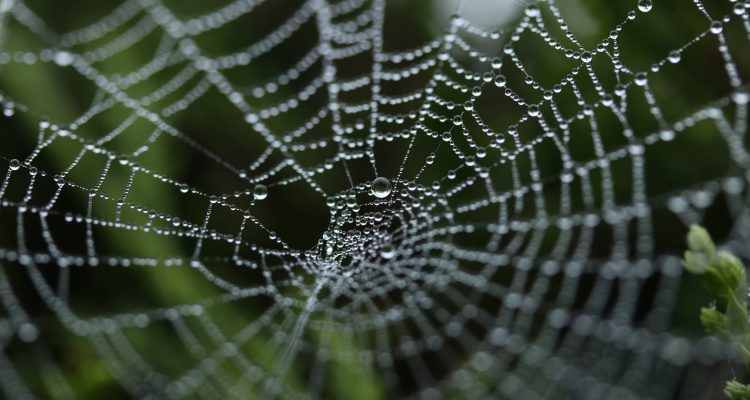What Invading Spiders Can Teach Us About Fear
Get downloadable PowerPoint presentation.
What Happened
It’s two months before Halloween, but no matter: Rowlett, Texas, is looking pretty creepy these days. The Dallas suburb has the long-jawed orb weaver to thank for it.
Drive down CA Roan Drive in Rowlett, and you’ll find the trees there are covered in gigantic webs—some 40 feet tall—and filled with thousands of spiders that got together and built a gigantic, creepy communal home.
It’s not the first time Rowlett has been home to these massive webs. In 2007, nearby Lake Tawakoni State Park welcomed another infestation of long-jawed orb weavers, which built webs that, according to Park Superintendent Donna Garde, looked like “something out of a low-budget horror movie.” Only, she added, much, much bigger.
As spooky as the webs look, and as fearsome as the spiders appear to be, scientists suggest they’re veritable pacifists in the arachnid world. The inch-long spiders are not venomous, and they’ve never been known to bite humans or bother most of the other critters living in the webs.
Experts say these huge webs should be treated as natural marvels, not sites for some sort of spider-based apocalypse scenario. After all, spiders are typically loners, and it’s exceedingly rare to see them work together to build such a colossal structure.
Talk About It
We hear this sort of thing all the time. “This frightening, monstrous-looking thing? It’s quite harmless, actually. It’s an important part of nature. Don’t be afraid.”
It’s an important thing for us all to remember, especially this time of year when many are getting ready to start school again. Let’s not kid ourselves: School can be scarier than any 40-foot web. Starting middle school or high school, with all its new challenges, is bound to be frightening for many. Or, although we may not be going to a new school, a new year is bound to come with its share of challenges: difficult classes, new stresses, dealing with bullies who made last year so terrible.
Further, if we’re not worried about school, there are plenty of other things that can strike fear in all of us: new jobs, old relationships, tasks and appointments we’d really like to forget or avoid. Sometimes they inspire just a little bit of unease. Other times, they strike terror in our hearts. Our fear can entangle us as effectively as a mass of webbing might.
Let’s face it: There are some things and situations which we should fear, but often our fears are a little like those webs in Rowlett: What we see or imagine is far more fearsome than the reality. When we have reason to fear, sometimes the best thing we can do is face the fear with God’s help. Sometimes, whatever we were scared of might help us in ways we can’t imagine now.
What are you scared of today? What are you dreading? What would you like to run away from, and why? Why does it make you fearful? What might help you ease that fear?
Have you ever been scared of something that turned out to be not such a big deal? Have you helped your friends through their own fears on occasion? What did you say to help them?
Has your faith helped you through scary times? How? Do you think God is with you when you’re scared? Do you ever feel His presence? When?
What the Bible Says
“For God gave us a spirit not of fear but of power and love and self-control” (2 Tim. 1:7).
“Fear not, for I am with you; be not dismayed, for I am your God; I will strengthen you, I will help you, I will uphold you with My righteous right hand” (Isa. 41:10).
“When I am afraid, I put my trust in You. In God, whose Word I praise, in God I trust; I shall not be afraid. What can flesh do to me?” (Ps. 56:3-4).
“Have I not commanded you? Be strong and courageous. Do not be frightened, and do not be dismayed, for the Lord your God is with you wherever you go” (Josh. 1:9).
Paul Asay has written for Time, The Washington Post and Christianity Today. He writes about culture for Plugged In and has published several books, including his newest, Burning Bush 2.0 (Abingdon), available now. He lives in Colorado Springs. Check out his entertainment blog at Patheos.com/Blogs/WatchingGod or follow him on Twitter @AsayPaul.




